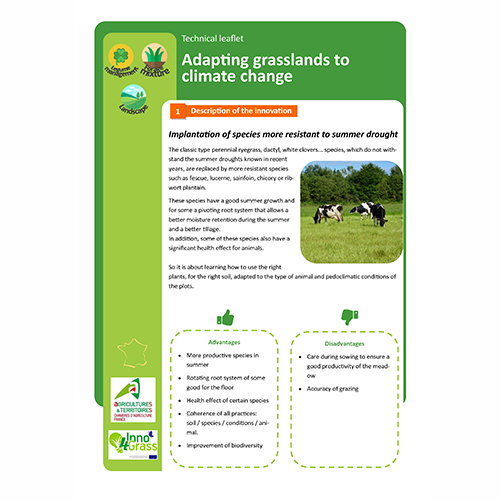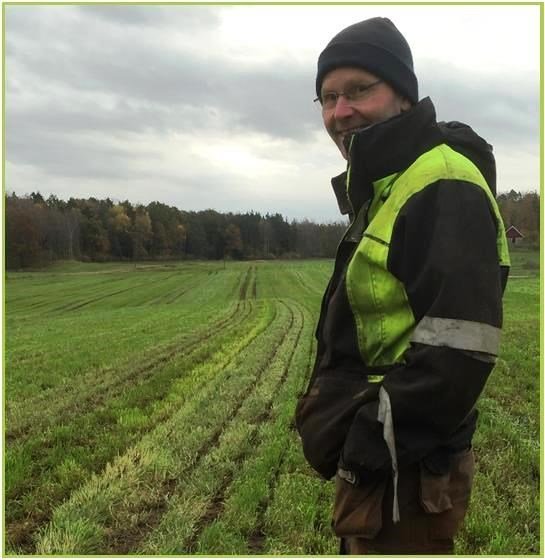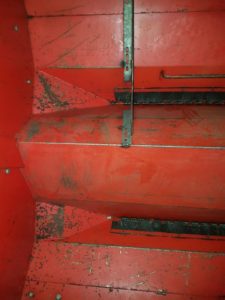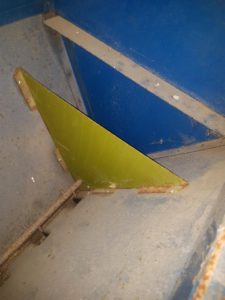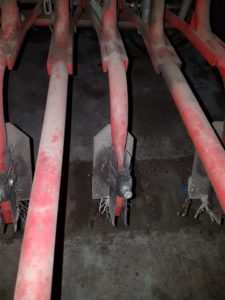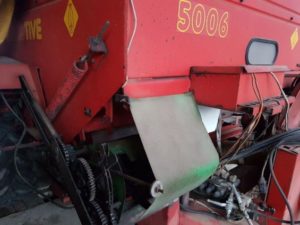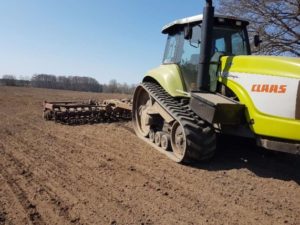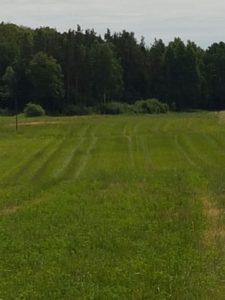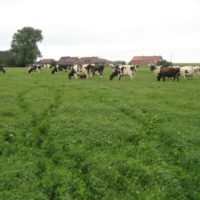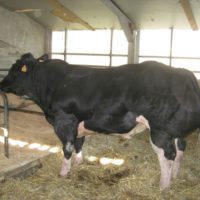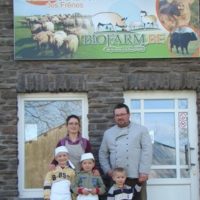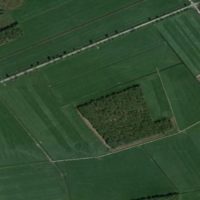Description
Description of the innovation
Cheap and effective tramline markers save time and spare the ley
In the past, half the time spent on fertilising the ley went on marking tramlines to avoid overlaps, but Börje Persson in Humlaröd found an environmentally friendly solution in the 1980s, long before GPS-systems were on the market. His first attempt was an unsown row in the ley, while the current system is a row sown with cocksfoot to make a biological tramline marker. This leads to time saved when spreading fertiliser and slurry. It also saves time as there is less need for instructing drivers on how to cover irregular fields, since the cocksfoot marker shows the most effective path. The improvement also leads to increased yield, an extra harvest every ten years according to Danish trials. The present goal is to adapt the ley harvesting machinery to the same width.
The cocksfoot tramline marker is very simple, but effective. It appears clearly prior to timothy and ryegrass thanks to faster development in all cuts. It is also much less expensive than modern GPS equipment available. It always remains in the next year. The farm keeps an old seed drill exclusively for ley sowing. It is equipped with a separate slot for the cocksfoot seed and has modified coulters for sowing no deeper than 2 cm.
Advantages
- Saving time when fertilising and instructing people
- Increasing yield
- Managing to cover irregular fields in the same way every time
- Less soil compaction
- Tramline marker remains in the next years
- Less expensive than modern GPS equipment
Disadvantages
- The seed drill has to be modified
- Adjusting all machinery to the same width
Recommendation to farmers
Anyone can try this, also in small fields, as long as the ley is composed of species with slower development than cocksfoot. It appears clearly prior to timothy and ryegrass thanks to faster development in all cuts. A separate compartment for cocksfoot seed in the seed drill makes the system work.
However, adjusting all machinery to the same width is challenging. The width of the seed drill needs to be compatible with today’s large harvesting machinery. On this farm, a 6-m Tive seed drill is used for ley sowing.
- There is a separate compartment for cocksfoot seed in one part of the seed drill.
- There is a separate compartment for cocksfoot seed in one part of the seed drill.
- The seed drill has modified coulters for sowing no deeper than 2 cm.
- A gearbox that does not change the seed quantity.
- Last harrowing before sowing.
- There is a biological tramline marker with cocksfoot every 12 meters.
More information
- Alvemar, H. 2014. Controlled traffic for grass silage production – An economic evaluation for dairy farmers. SLU. Department of Economics. D-level thesis 899. 56 pp. www.alvemarkonsult.se/ctf
- Green, O. & Haby, L. 2010. Fasta körspår – packar i spåret men gynnar fältet och grödan. Aarhus Universitet. Department of biosystems engineering. https://h24-files.s3.amazonaws.com/101965/265731-jjdv2.pdf
